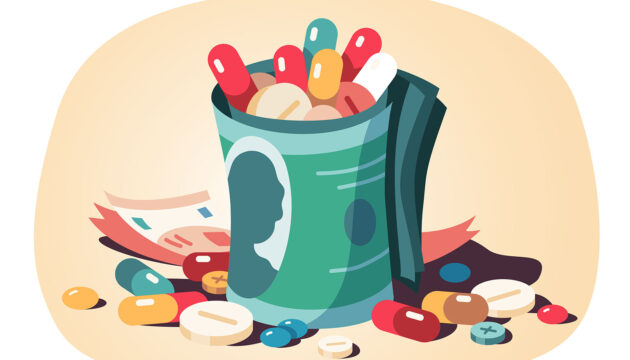
Drug Pricing
Featured Topics
Lead story

Other featured articles
-
The Elasticity of Pharmaceutical Innovation: How Much Does Revenue Drive New Drug Development?
The long-run innovation elasticity associated with U.S. revenues lies between 0.25 and 1.5, implying that a 10% reduction in expected revenues leads to a 2.5% to 15% decline in pharmaceutical innovation. Policymakers evaluating options to manage healthcare costs should take significant care to balance reductions in health outcomes long-term with short-term access improvements.
Posted in -
Medicare Drug Price Negotiations Need Something New: A Floor
Adding a floor price mechanism would protect valuable innovation and effectively give future generations of patients a seat at the negotiating table.
Posted in -
Comments to CMS on Proposed $2 Drug List Model
Transparent, simple plan benefits like the proposed model, as well as transparent cost structures throughout the system, have valuable impacts for the beneficiary and the potential to help align incentives throughout the distribution system.
Posted in -
The Inflation Reduction Act and Patient Costs for Drugs to Treat Heart Failure
Although previous legislation technically closed the Part D coverage gap, patients still faced mid-year out-of-pocket increases. The Inflation Reduction Act’s standard benefit design eliminates the coverage gap in 2025.
Posted in
About this section
High pharmaceutical prices may garner headlines, but innovation must be appropriately incentivized to help solve healthcare’s intractable challenges. The Schaeffer Center connects industry, the academy and government to support the scientific and technological creativity that saves and improves lives — and spurs economic growth.
Our Work In Drug Pricing
-
Scrutinizing the Role of Pharmacy Benefit Managers
Policymakers should consider increasing transparency, explore alternatives to the rebate system, scrutinize vertical integration, and seek better alignment of PBM incentives with patient and payer interests.
-
PBM Market Concentration Varies Among Payer Types
A few pharmacy benefit managers dominate each of the payer markets, and the three biggest PBMs appear to be targeting different markets.
Categorized in -
Pharmacy Benefit Manager Market Concentration for Prescriptions Filled at US Retail Pharmacies
A few pharmacy benefit managers dominate each of the payer markets, and the three biggest PBMs appear to be targeting different markets.”
Categorized in -
Responding to Some ‘Inconvenient’ Truths About PBMs
The lack of transparency and inability of plan sponsors to assess how much pharmacy benefit managers generate in savings and how much they retain for themselves is the root issue.
Categorized in -
State Mandates to Cap Out-of-Pocket Insulin Costs Are No Longer Necessary
State laws capping patients’ out-of-pocket insulin costs, though well-intentioned, have had limited impact.
Categorized in -
A Patient-Focused, Evidence-Driven Approach to PBM Reform
As policymakers consider reforms to the prescription drug supply chain, they should keep five principles in mind to ensure better outcomes for patients.
Categorized in













